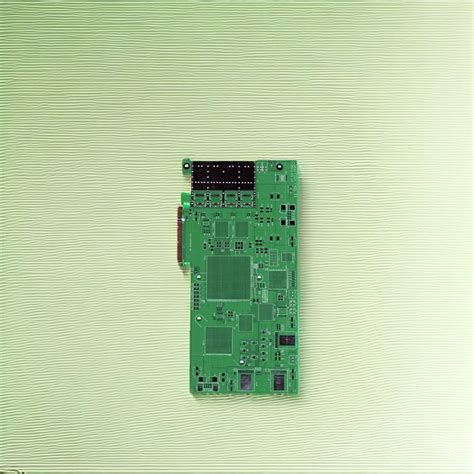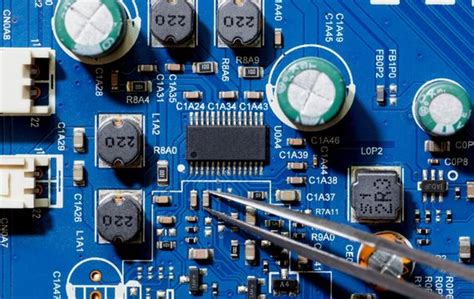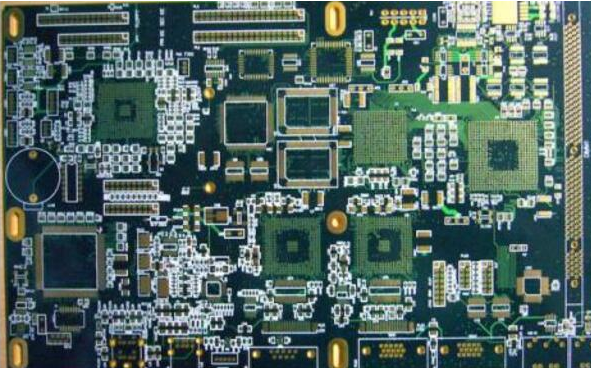Mastering PCB Assembly: Key Components for Success
Key Takeaways
In the realm of pcb assembly, understanding the various components is essential for achieving successful outcomes. The printed circuit board assembly (PCBA) process begins with recognizing the key roles played by components like resistors, capacitors, and integrated circuits. Each element not only contributes to the functionality of the electronic design but also impacts the overall reliability and performance of the finished product. For instance, choosing the right type of solder is crucial; it influences both adhesion and conductivity, which are vital for ensuring that all printed connections remain strong under varying conditions. Moreover, employing appropriate techniques during assembly helps mitigate common issues such as cold solder joints or bridging. To foster efficiency, technicians should be equipped with essential tools that facilitate precise component placement—thus ensuring optimal operation within circuit boards. By adhering to established best practices and focusing on quality control measures throughout the entire pcb assembly process, manufacturers can enhance component reliability while paving the way for innovative advancements in PCB technology.
Understanding PCB Components: The Building Blocks of Assembly
In the realm of PCB assembly (or PCBA), understanding the various components involved is crucial to achieving successful circuit board production. Each component plays a unique role and contributes to the overall functionality and reliability of the final product. The main components typically found in PCB assemblies include resistors, capacitors, integrated circuits, inductors, and diodes.
| Component | Function |
|---|---|
| Resistors | Limit current flow and adjust signal levels. |
| Capacitors | Store electrical energy for later use. |
| Diodes | Allow current to flow in one direction only. |
| Inductors | Store energy in a magnetic field when electrical current passes through them. |
| Integrated Circuits | Combine numerous functions into a single chip for compactness and efficiency. |
Utilizing these essential parts effectively can greatly enhance the performance of any electronic device. For instance, a well-placed capacitor helps filter out noise and stabilize voltage fluctuations, while precise resistor values determine how much current flows through specific pathways in the circuit.
When assembling these components onto a printed circuit board, it’s important to consider factors such as footprint size and orientation—each element must be accurately placed to ensure optimal function during operation. Understanding these nuances not only aids in creating functional boards but also minimizes potential errors that could arise during the soldering process.
In summary, grasping the functions of each component is essential for anyone involved in pcb assembly, whether they are hobbyists or professionals, ensuring that every part contributes its intended purpose within larger electronic systems.
The Role of Solder in PCB Assembly: Techniques for Success
Solder plays an indispensable role in PCB assembly (or PCBA), acting as the adhesive that unites various electronic components to their respective pads on the printed circuit board. One of the primary techniques for effective soldering involves ensuring that both the components and the pads are properly prepared. This means cleaning surfaces to remove any oxidation or contaminants that may hinder the solder’s ability to adhere. Precision is key: using a soldering iron with the right tip and temperature helps achieve a clean joint without damaging sensitive components.
Another valuable technique revolves around control of heat exposure. Overheating can cause thermal stress or damage to PCB components, potentially leading to future failures. Utilizing advanced tools, such as reflow ovens or soldering stations, can help regulate temperature and ensure even distribution of heat. Moreover, understanding different types of solder—such as lead-based and lead-free variants—allows technicians to select the appropriate material based on project requirements and industry standards.
To further enhance reliability, implementing efficient techniques like wave soldering or selective soldering can minimize human error and improve consistency across production batches. It’s essential to continually refine these skills, as effective solder joints are not just about aesthetics; they directly influence the performance and durability of circuit boards. Ultimately, mastering these soldering techniques is crucial for anyone involved in pcba, ensuring each board functions optimally within its intended application.
Essential Tools for PCB Assembly: What Every Technician Needs
When it comes to pcb assembly, having the right tools is crucial for ensuring high-quality results and efficiency. A well-equipped workstation typically includes soldering stations, precision tweezers, and a magnifying glass or microscope for accurate component placement. Additionally, automated pick-and-place machines can greatly enhance productivity by accurately positioning components on the printed circuit board (PCB), which is essential for successful pcba. Technicians should also consider incorporating tools such as reflow ovens and hot air rework stations for effective soldering processes. Furthermore, multimeters and oscilloscopes are important for testing electrical connections and component integrity post-assembly. Each of these tools plays a significant role in not only facilitating seamless PCB manufacturing but also in promoting long-term reliability of the final product. As technology continues to evolve, investing in advancements such as laser cutters or 3D printers may also become beneficial to meet the demands of modern circuits. Understanding and utilizing these essential tools will enable technicians to refine their skills and achieve outstanding results in their PCB assembly endeavors.
Best Practices for Component Placement on Circuit Boards
Effective pcb assembly largely depends on the strategic placement of components on the circuit board. Proper component placement enhances both the performance and reliability of the final product. To achieve optimal layouts, technicians should prioritize the arrangement according to signal flow and electrical pathways. Placing components such as capacitors and resistors close to their corresponding ICs minimizes trace lengths, thereby reducing potential interference and improving overall circuit efficiency. It is recommended to group electrolytic capacitors with their related circuits, which helps streamline assembly processes and avoid confusion during production.
Moreover, it is essential to consider the thermal management of components during pcba. Components that generate heat should be spaced appropriately to prevent overheating and allow for effective airflow or heat sinking. Furthermore, incorporating a staggered pattern for larger components can facilitate better soldering access and enhance mechanical stability once soldered onto the board.
Lastly, technicians should regularly check alignment and orientation before soldering components in place. Utilizing automated optical inspection (AOI) systems can also assist in verifying component placements post-assembly. By adhering to these practices, manufacturers can drive efficiency while ensuring that each pcb is built for reliability and performance.
Troubleshooting Common PCB Assembly Issues: A Guide for Beginners
In the realm of pcb assembly or PCBA, encountering problems during the assembly process is an inevitable aspect that many beginners face. Understanding how to effectively troubleshoot these issues can significantly enhance the quality and efficiency of your assembly efforts. A common issue that often arises is misalignment during component placement. It is crucial to ensure that each component is correctly positioned before soldering, as improper alignment can lead to circuit failures. Using a solder paste stencil can help in achieving precise placement.
Furthermore, overheating components during soldering can also compromise the integrity of your pcb assembly. It’s advisable to monitor soldering temperatures meticulously and utilize techniques such as thermal profiling. This ensures that all components are subjected to appropriate heat levels, preventing damage and maintaining functionality.
“Always inspect your work frequently during the assembly process; early detection of issues saves time and resources.”
Additionally, if you notice inconsistent results in solder joints, it might be beneficial to review your soldering techniques or the quality of your solder material. Utilizing high-quality solders and following recommended practices will promote the reliability of connections in your PCBA.
Remember, learning from these common issues not only bolsters your skills but also fosters an environment of continuous improvement in PCB production practices. Being disciplined about quality control while remaining adaptable will serve you well on your journey through the intricacies of PCB assembly.
Quality Control in PCB Production: Ensuring Component Reliability
Quality control in PCB assembly is crucial for establishing component reliability, which directly impacts the overall performance of electronic devices. During the pcba process, strict standards must be enforced to verify that each component meets the necessary specifications. This involves a systematic approach to inspections at various stages of production—starting from component procurement to final assembly. Implementing regular checks helps identify any defects in components, such as inconsistencies in solder joints or misalignments during placement, which can compromise functionality. Furthermore, advanced testing methods, including automated optical inspection (AOI) and X-ray inspection, provide an additional layer of scrutiny that ensures every circuit board adheres to high-quality standards. By prioritizing quality control measures, manufacturers not only enhance pcb assembly efficiency but also significantly reduce the risk of failures in the field, leading to a more reliable end product for consumers and industries alike.
Innovations in PCB Technology: Future Trends and Components
As technology advances, the landscape of PCB assembly continues to evolve, bringing forth innovations that enhance efficiency, reliability, and complexity in circuit board design. One significant trend shaping the future of PCBA is the integration of smart components that can communicate with each other, allowing for more intricate designs that enable functionalities like self-diagnostics and adaptive responses to environmental changes. Moreover, advancements in automation have transformed production lines, making processes faster and reducing human error through precision robotics capable of high-speed placements and soldering. Another pivotal innovation is the adoption of flexible circuits, which offer more versatility in applications ranging from wearable technology to compact electronic devices. This shift not only promotes creative designs but also supports the booming demand for smaller, lighter devices. Lastly, sustainability is becoming increasingly critical; therefore, materials used in PCB assembly are evolving towards eco-friendly options that minimize environmental impact without compromising on performance. Collectively, these trends indicate a future where PCBA is not just about connectivity but embraces a holistic approach to functionality and sustainability in electronic design.
Conclusion
In summary, mastering PCB assembly involves a comprehensive understanding of the various components that play crucial roles in ensuring the functionality and reliability of your circuit boards. Each component assembled on the PCB, from resistors to capacitors and integrated circuits, contributes specific electrical properties that ultimately affect the board’s performance. The significance of proper component placement cannot be overstated, as it not only influences the circuit’s efficiency but also impacts overall reliability during operation. Techniques such as careful soldering practices and utilization of appropriate tools are essential to achieve a successful pcba process. As technology evolves, staying updated with innovations in PCB assembly techniques and materials will help technicians adapt to new challenges and maintain high-quality standards. Therefore, understanding these vital elements will empower anyone involved in circuit board production to implement best practices that enhance both efficiency and reliability in their assemblies.
FAQs
What is PCB assembly?
PCB assembly, often abbreviated as PCBA, is the process of connecting various electronic components to a printed circuit board (PCB) to create functional circuit assemblies. This involves multiple techniques, including soldering components onto the board to ensure reliable electrical connections.
Why are components important in PCB assembly?
The components used in PCB assembly are crucial because they define the functionality and performance of the finished product. Each component, such as resistors, capacitors, and integrated circuits, has a specific role to play in the electronic circuit.
What techniques are used in PCB assembly?
There are several techniques employed in PCB assembly, including Surface Mount Technology (SMT) and Through-Hole Technology. These methods determine how components are attached to the PCB, impacting both production efficiency and circuit performance.
Can I troubleshoot PCB assembly issues?
Yes, many common issues during PCBA can be troubleshot effectively. Understanding typical problems such as misaligned components or insufficient solder can help technicians resolve these issues quickly.
How can I ensure quality in PCB production?
Quality control is vital in PCB assembly, involving inspections at various stages of production. Testing methods such as Automated Optical Inspection (AOI) and functional testing help ensure that all components meet necessary standards for reliability.
What innovations should I be aware of in PCB technology?
Recent advancements in PCBA include the development of flexible PCBs and increased use of automation in assembly processes. Staying informed about these trends can enhance your understanding and application of current technologies.
For more detailed information about pcb assembly, please visit our comprehensive guide at Andwin PCB Assembly.







